No matter where you live, it’s been a long time since the last “normal” ag trade show. The pandemic forced a break in this long-standing tradition, and it wasn’t easy. Trade shows are an integral part of doing farm business. At a time when there are fewer equipment dealers offering a lower diversity of makes, a trade show may be the only place to see and thoroughly inspect what other manufacturers offer. With that in mind, I spent a full three days at the 2022 Ag in Motion Show near Langham, Sask. to see the sights.
On the sprayer front, a lot has happened in the last few years. The strength within the “new kids on the block,” the Netherlands’ Agrifac sprayer and Germany’s Horsch Leeb, is noteworthy. Even with fledgling dealer networks, they’ve managed to sell dozens of units based on the strength of convincing features. These go beyond exceptionally wide booms and large tanks, and include smart plumbing designs with recirculating booms and easier cleanout. They also weigh less than their North American counterparts despite standard features like four-wheel steering and superior boom stability. Most importantly, both manufacturers are committed to innovation and offer quick iterations within their models, incorporating new ideas constantly. Often, it’s the small thoughtful things that save time and create endearment.
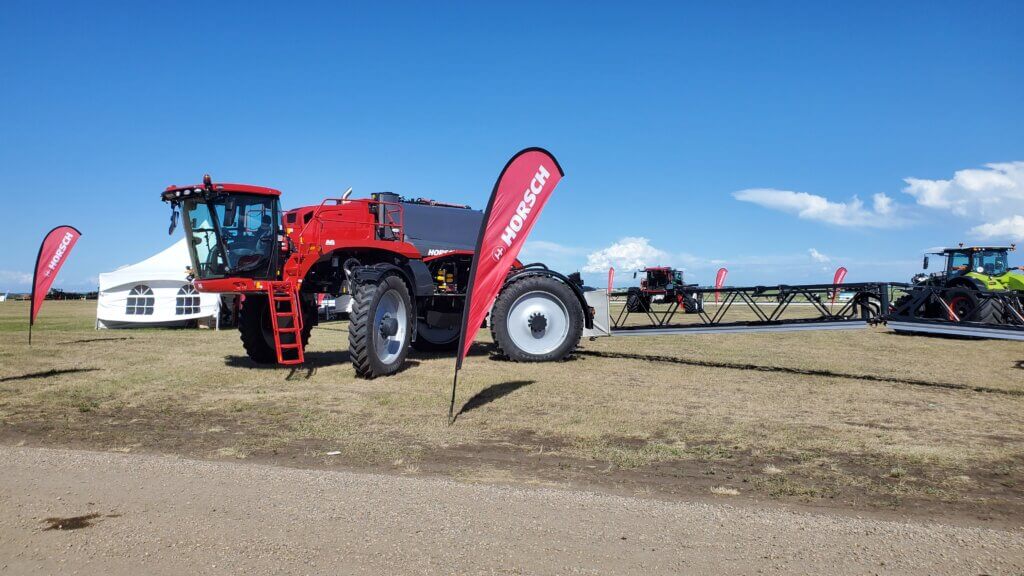
Case IH showed their new generation 4450 series sprayer. The machine has many improvements over the 4440 edition, focusing on operator comfort, digital integration and hydraulic capabilities. It weighs more than its predecessor, as to be expected. The Millennium spray boom is great, but unfortunately, there is no factory-designed recirculation, leaving owners to go to the after-market for solutions–a missed opportunity.
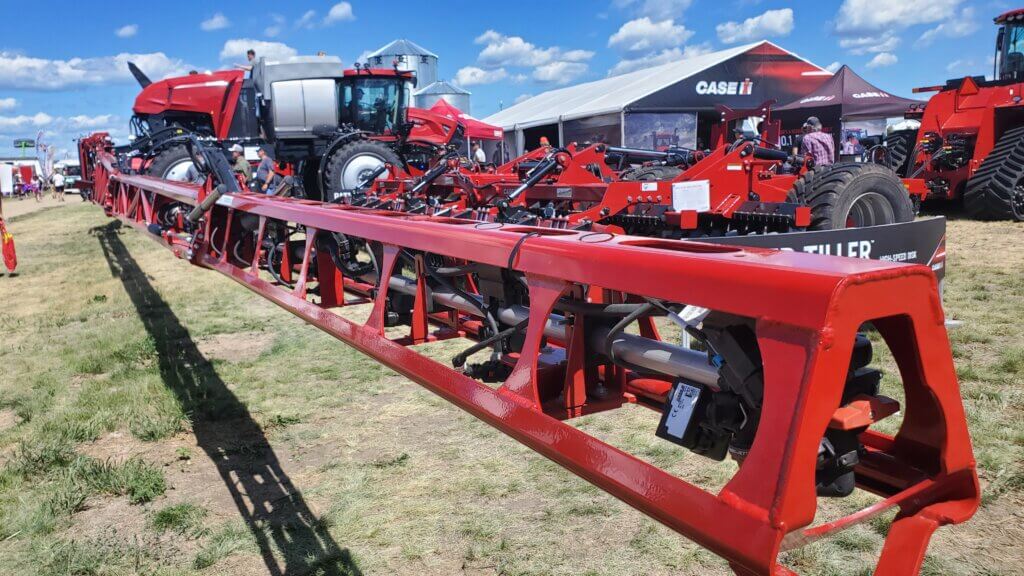
Since acquiring Miller Sprayers in 2014, New Holland has had a unique front-mount boom design, and one was on display. Nicely engineered, I’ve always liked the concept of a front-mounted boom for better visibility of the things that matter. But again, there’s no recirculation. Did they consider it yet feel it wasn’t a high priority? We know that recirculating booms perform a waste-free prime while avoiding cleanout problems with boom-ends. These are important issues for applicators. I’m also curious why NH hasn’t gone to the Wilger boom components and nozzle bodies for IntelliSpray, since the Wilger tips are still the best choice for PWM.
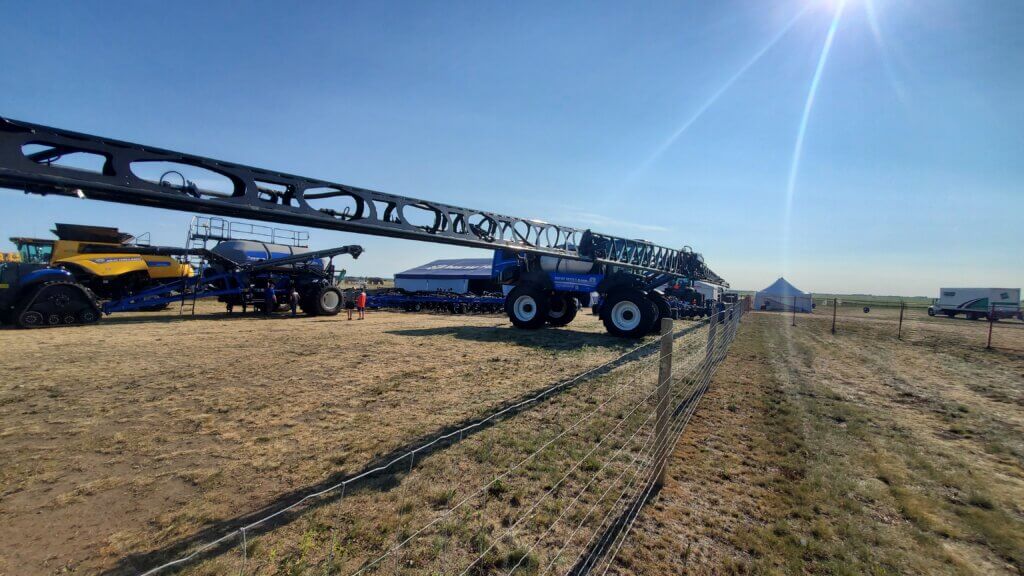
John Deere’s newly named sprayers were at the show, the new models also offering improvements in operator comfort. The one on display was fitted with its recirculating boom, a nice addition to the feature set. Like the Raven retrofit kit, it appears to be designed with 200 gpm flow needs in mind, necessitating additional pipes and hoses that other systems avoid. Such high flows are very rarely needed except for 28-0-0 topdressing. Still, kudos for having a factory installed, controller integrated option.
AGCO showed off its Fendt Rogator and my heart went pitter patter as I approached it, recalling seeing its namesake at Agritechnica 2019. At the time, I felt it was one of the top sprayers at the German show owing to its innovative frame and suspension systems (independent wishbone), unique pump system (centrifugal pump that can run dry and never lose prime) and efficient plumbing. But this Fendt Rogator was a traditional Rogator frame with a Fendt tractor hood and cab to fool the passer-by. It’s no slouch, with optional four-wheel steering, adjustable clearance, and Liquid Logic recirculating booms. I felt cheated, nonetheless.
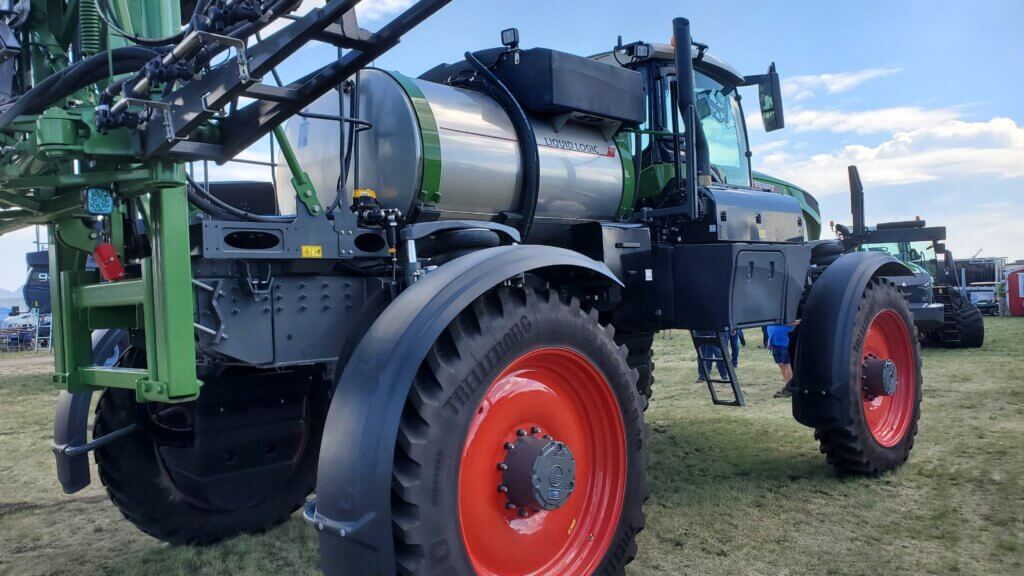
A visit to the Apache display showed why they remain a valid sprayer option. Built on mechanical two-wheel drive, they save weight and have better fuel economy than their hydrostatic counterparts. Yet, they still offer large tanks and aluminum Pommier booms when requested. Like most other brands, Pulse-width Modulation (PWM) is an available option. Personally, my soft spot for lighter sprayers is due to analysis of logistical efficiency–fill, clean and transport times. These create competent productivity values even with smaller sprayers that are more affordable to own and operate.
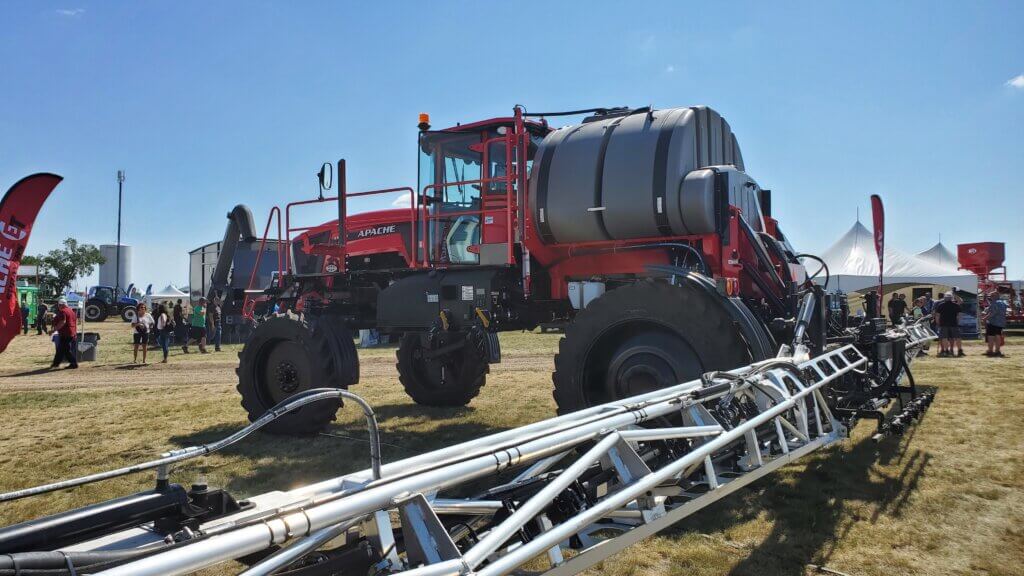
That led me to PhiBer Industries, creators of the DASH tender system. The family-owned firm from Crystal City, Man. creates custom solutions for hauling water and metering pesticides to sprayers. Thoughtful designs and use of air-driven product pumps with volumetric metering creates an efficient system that’s easy to understand and use. PhiBer joins existing products from Pattison Liquid, Free-Form Plastics or The Handler to offer a basic inductor and pump system. They will also build a complete custom trailer incorporating numerous additional features.
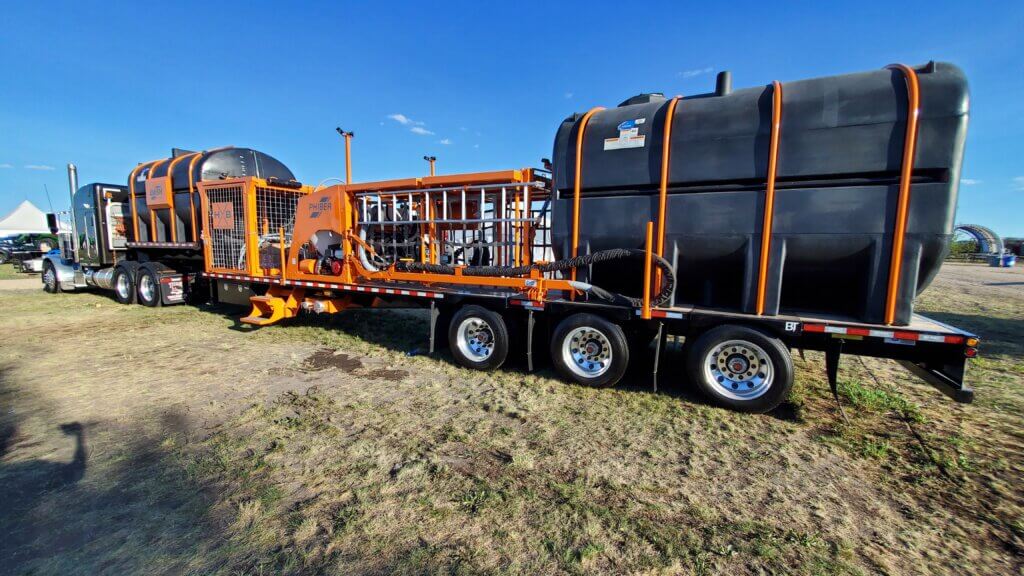
Weed detection was shown by three exhibitors, but only one demonstrated it in action. Croplands had its field-proven green-on-brown WEEDit unit installed unit on a customer’s John Deere R4045, available for a test drive, as well as offering technical support at a booth. WEEDit remains the standard for green-on-brown and works very reliably out of the box. John Deere had an installed See & Spray Select, also green-on-brown, on a sprayer, but did not run it.
The most exciting new item sat at the Agrifac booth with their AiCPlus feature courtesy of Bilberry. Bilberry is a small French company, recently acquired by Trimble, selling green-on-green spot spray retrofits in Australia for over a year now. In Canada, they offer four algorithms at this time: green on brown for general burndown or desiccation; green-on-green for broadleaf weeds in cereals; grassy weeds in canola; and, both broadleaf and grassy weeds in corn. Powered by colour cameras and NVIDIA processors, continuous advancements in the software will improve performance as more weeds are added to its list of capabilities. Two AICPlus machines are running in Manitoba, and it’s good to see the company focusing on this market. John Deere and Greeneye, for example, are focused on the US row-crop market for the time being.
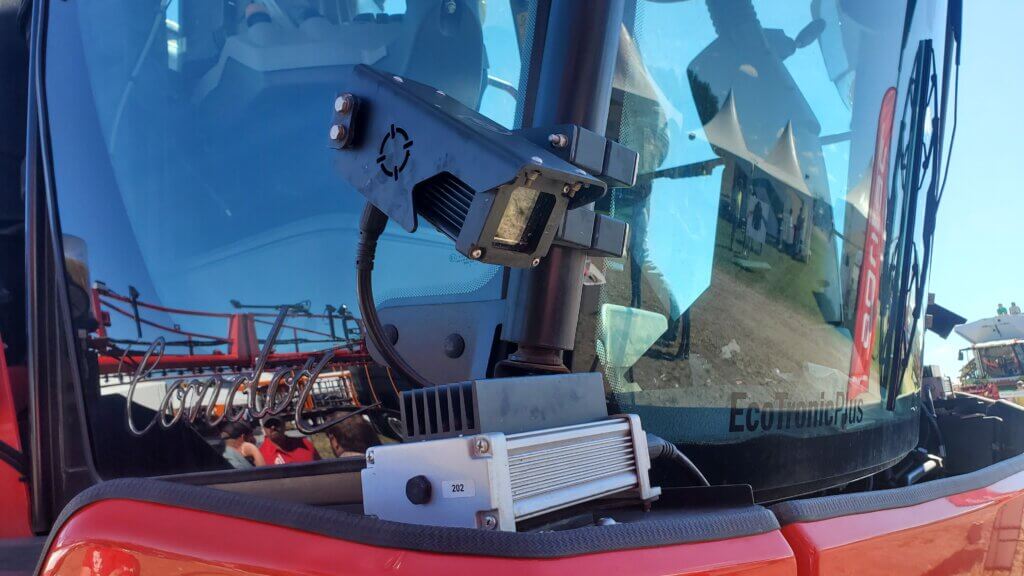
Perhaps the most ambitious spray technology was shown by Precision AI. Utilizing a large-fixed wing drone, the company aims to detect and spray weeds while operating at 60-to-70 km per hour. A hybrid power unit has an internal combustion motor that generates electrical power for rotors. This type of design offers significantly longer flight times than the 15 minutes currently possible with battery-driven units. Fascinating.
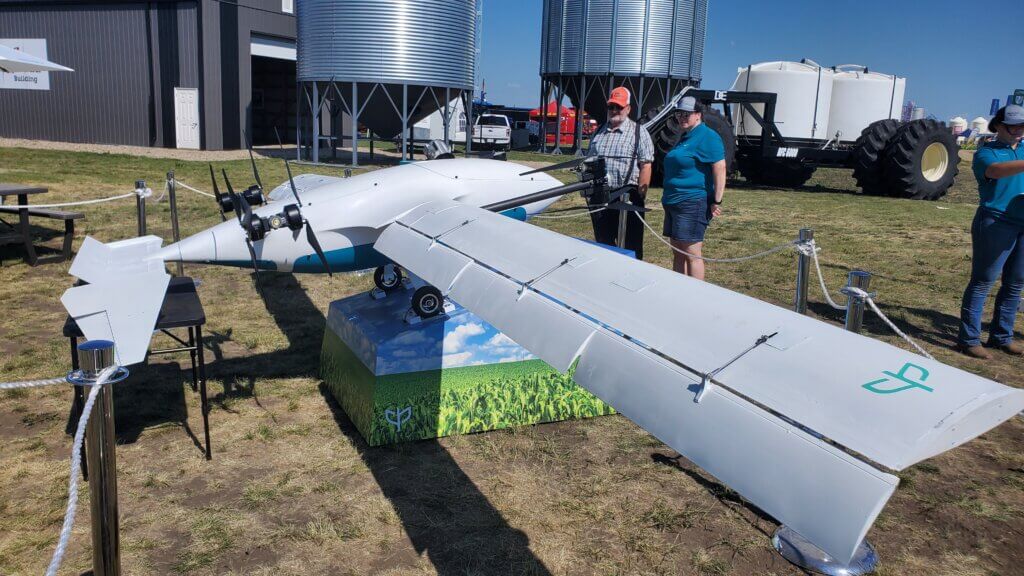
Spray drones also featured in the demonstration space at Ag in Motion despite the fact that this application method remains illegal for pesticides in Canada. It’s astounding what types of advancements each year brings. DJI is the global leader with three models available in Canada, including the 8-litre capacity T10, the 20-litre T20, 30-litre T30, and soon, the 40-litre T40. XAG, another leading manufacturer, showed a new two-rotor unit with rotary atomizers for excellent droplet size control. Flow management is nicely handled by accurate flow meters, but pressure sensors and displays are lacking in all units I’ve seen. Given that pressure is a big determinant of spray quality for hydraulic nozzles, that’s an oversight. We’ll continue to wait for this application method to be legal for pesticides in Canada.
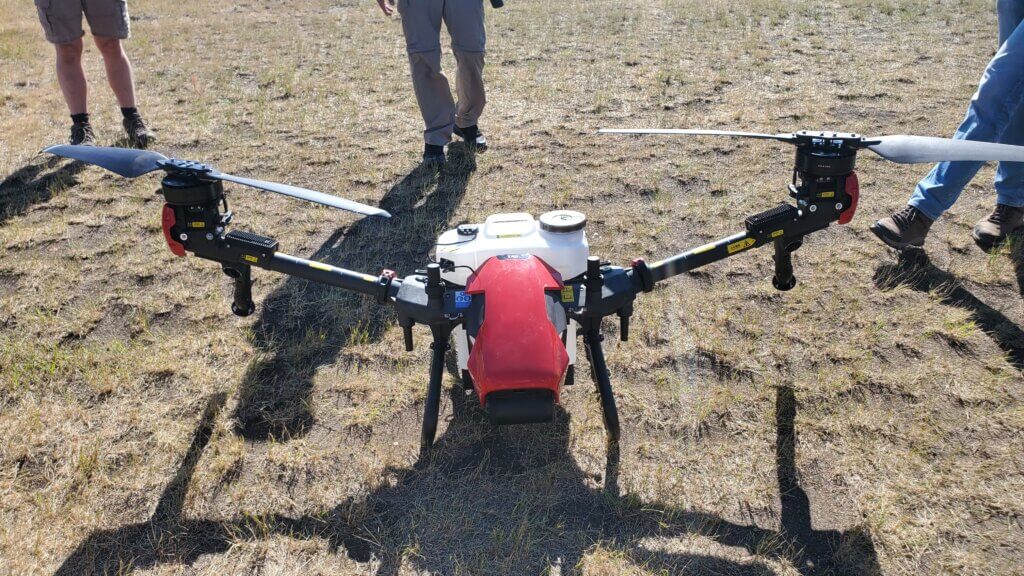
As always, the show was full of old friends and catching up was welcome after the recent isolation. The opinions and advice from our peers play a big role in agriculture, where relationships and reputation still govern business alongside product features and cost. Trade shows are the perfect place for all of that to come together. Welcome back, old friend.